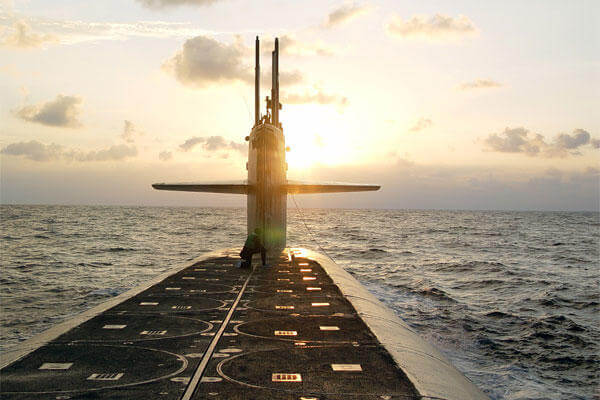QUONSET POINT, R.I. -- Over the next several years, General Dynamics Electric Boat plans to add several new buildings to its facility here, double its workforce, and invest about $150 million -- all as preparation for the construction of the Navy's next-generation nuclear-armed submarine.
Early prototyping is already under way at Electric Boat for the Ohio Replacement Program (ORP), a high-tech, 560-foot long, nuclear-powered submarine. Navy leaders have announced plans to build 12 ORPs, with the first one slated to enter service in the early 2030s.
General Dynamics Electric Boat is working on a five-year technology development contract worth up to $1.85 billion on the submarine that has come to be known simply as ORP.
These investments come at a time when the majority of the defense industry is scaling back investments because of smaller government defense budgets -- an interesting move during the days of sequestration and reductions.
The ramp up comes as Electric Boat starts the program's initial technology development phase, an effort that involves early design work and some early prototyping welding missile tubes to portions of the hull, said Brian Wilson, ORP program manager, Electric Boat.
At Quonset Point, a new hull manufacturing center will begin construction in the third quarter of this year, a building which will eventually be joined with a new module outfitting facility, said Robert Hamilton, director of communications, Electric Boat.
In addition to possibly increasing the Quonset Point workforce from 2,900 up to 6,000 by 2020, Electric Boat may add thousands of workers at its Groton, Conn., facility as well -- the location for final integration and testing of new submarines, Hamilton explained.
The Quonset Point facility in Rhode Island is one of three Electric Boat manufacturing and development sites, with the others being New London and Groton. The facilities are all currently working on construction of at least five Block III Virginia-class attack submarines at the moment, company officials said.
Block III is an eight-ship block of submarines and the first two have already been built, said Sean Davies, general manager, Quonset Point, Electric Boat. The construction of Block III Virginia-class submarine is divided up among Electric Boat in Groton, and Huntington Ingalls Industries, or HII, in Newport News, Va.
"The Navy has a 30-year ship building plan. We are building to support the Navy acquisition strategy," Davies said.
Navy leaders have emphasized that the service hopes to produce the ORP for less than $6 billion per boat.
Submarine construction has evolved over the years to incorporate greater degrees of efficiency and computer automation, Davies explained. There are some parts of the process where welding specifications are communicated via computer screen, for example.
Steel plates are blasted and bent before being welded into a complete cylinder, Davies explained. A cylinder uses three steel plates rolled by a 5,000-ton press, he added.
"The submarine hull cylinders are built to tight tolerances for circularity. We try to build a circle as perfect as we can because a perfect circle behaves much better when it is subjected to external pressure than a circle that is not perfect," said Davies.
Each cylinder forms a small portion of the submarine's hull; cylinders are then joined together to form what's called modules, or blocks of the submarines body. The hull surface is given a series of coats for corrosion prevention.
Much of the construction such as the loading of pipes, tanks and electrical equipment is all done in a shop environment prior to final assembly of the hull, in order to minimize costs to construction and increase efficiency, Davies explained.
The coating on the hull has become more efficient as well. Historically individual tiles were glued onto the hull with the desired coating, whereas now there are a series of molds that apply to the hull, enabling a much more efficient process, he said.
The Navy and Electric Boat have partnered up over the years through a program called capital investments, strategies to hopefully cut the costs of manufacturing the Navy's submarine fleet. Navy officials hope to see the investment pay off for ORP and even within the Virginia-class fleet.
With the Virginia-class submarine program, General Dynamics Electric Boat and the Navy together invested $9.4 million in a light metal fabrication shop at Quonset Point, an investment expected to yield $31 million in savings to the program.
As part of the same strategy, $13.1 million was spent on a module transportation system which will save an estimated $98.6 million. About $18.2 million was invested in a main construction building at the Groton facility, a move which is expected to yield $81.3 million in savings.





























